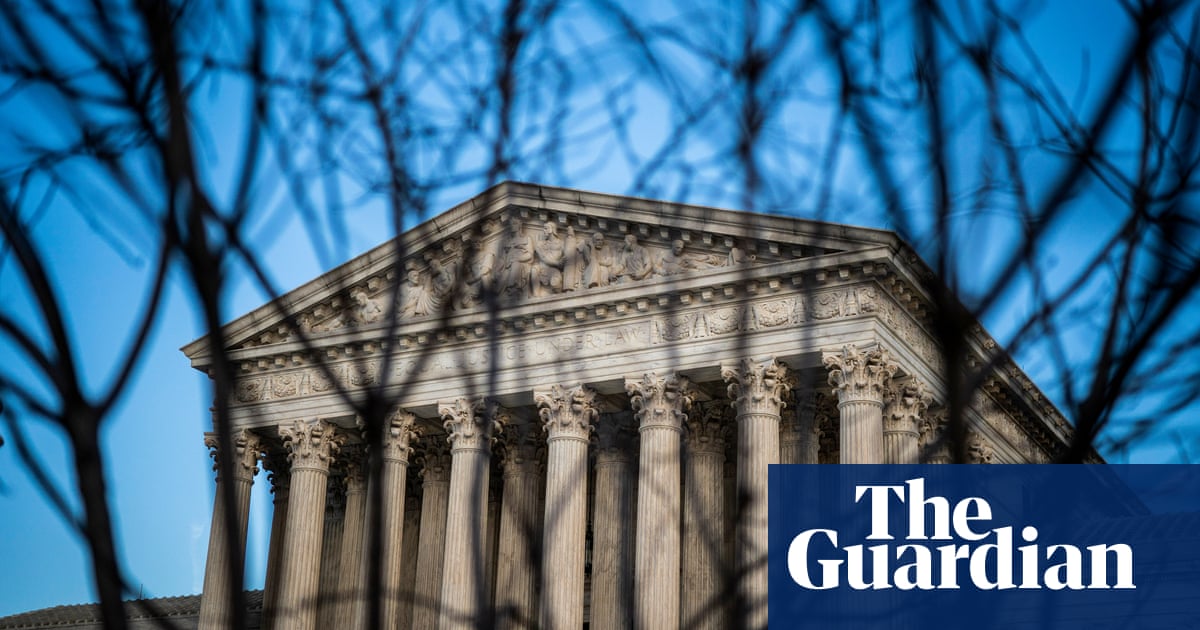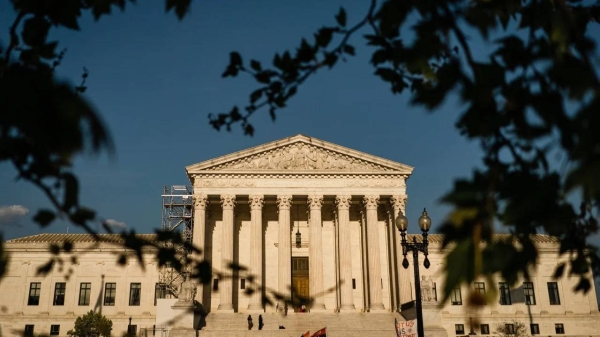
South Carolina Republicans do not need to redraw their congressional map, the US supreme court ruled on Thursday, saying that a lower court had not properly evaluated the evidence when it ruled that the lawmakers had discriminated against Black voters.
In a 6-3 decision, the justices sent the case back to the lower court for further consideration. The decision, in Alexander v South Carolina Conference of the NAACP, is a major win for Republicans, who hold a slim margin in the US House with six of South Carolina’s seven congressional seats. It also could give lawmakers more leeway to discriminate in redistricting and use partisanship as a proxy for race. That could be enormously powerful in the US south, where voting is often racially polarized.
“A party challenging a map’s constitutionality must disentangle race and politics if it wishes to prove that the legislature was motivated by race as opposed to partisanship. Second, in assessing a legislature’s work, we start with a presumption that the legislature acted in good faith,” wrote Samuel Alito in an opinion that was joined by the court’s five other conservative justices.
“The three-judge district court paid only lip service to these propositions. That misguided approach infected the district court’s findings of fact, which were clearly erroneous under the appropriate legal standard.”
The dispute centered on the way the Republicans who control the state legislature redrew the state’s first congressional district after the 2020 census. After Nancy Mace narrowly was elected in 2020, they shifted the district’s boundaries to make it much friendlier to Republicans. As part of that effort, they moved 30,000 Black voters from Mace’s first district to the sixth, currently represented by Jim Clyburn, a Black Democrat. A lower court had ruled that lawmakers had impermissibly relied on race when they drew it after the 2020 census, saying they had to redraw the district.
The case had dragged on for so long, however, that the lower court and the supreme court recently allowed South Carolina to use the district for this year’s election.
Mac Deford, an attorney challenging Mace, observed oral arguments in person. Deford said he watched Chief Justice John Roberts wrestle with the connection between race and politics.
“From my viewpoint, there was some signaling that they were going to draw some sort of line between race and politics. And I think that they did in this case,” Deford said, noting how in the earlier decision Shelby v Holder Roberts had proposed the idea that southern legislators had long abandoned heavy-handed racial discrimination in voting.
“This could be sort of setting the stage for a subsequent case, maybe next year, that could be brought on the Voting Rights Act that could further strip away the vote.”
The challengers in the case, the South Carolina branch of the NAACP and a South Carolina voter, argued that those actions violated the 14th amendment’s ban on sorting voters based on race. South Carolina Republicans argued that they were motivated by partisanship, not race.
In 2019, the supreme court said that there was nothing federal courts could do to stop gerrymandering based on partisanship. Sorting voters based on race, however, still remains unlawful. This was the first case that came to the court since its 2019 decision, forcing the justices to clarify their standard when the two issues are intermingled.
The lower court had relied on a trove of evidence and experts that the challengers offered to conclude that South Carolina Republicans were sorting voters based on their race. One of those experts used an algorithm to draw 20,000 maps that didn’t take race into account but complied with traditional redistricting criteria. But Alito and the other conservative justices said that evidence was not good enough.
Alito zeroed in on the fact that the challengers in the case had not offered an alternative map that achieved the partisan goals of Republican lawmakers – a safe Republican district – and that also had a higher Black voting age population as the challenged district. Such a map, he wrote, was critical to proving that South Carolina Republicans had considered race above other considerations.
“Without an alternative map, it is difficult for plaintiffs to defeat our starting presumption that the legislature acted in good faith,” he wrote.
That rationale drew a sharp rebuke from Elena Kagan, who accused the majority of getting the decision “seriously wrong” and inventing “a new rule of evidence”.
“As of today, courts must draw an adverse inference against those plaintiffs when they do not submit a so-called alternative map – no matter how much proof of a constitutional violation they otherwise present,” the liberal justice wrote in an opinion. “Such micro-management of a plaintiff ’s case is elsewhere unheard of in constitutional litigation. But as with its upside-down application of clear-error review, the majority is intent on changing the usual rules when it comes to addressing racial-gerrymandering claims.”
Kagan went on to outline how Thursday’s decision would give states much more leeway to enact discriminatory maps and voting policies.
“In every way, the majority today stacks the deck against the challengers. They must lose, the majority says, because the state had a ‘possible’ story to tell about not considering race – even if the opposite story was the more credible,” Kagan wrote in the opinion, which was joined by the court’s two other liberal justices, Sonia Sotomayor and Ketanji Brown Jackson.
“When racial classifications in voting are at issue, the majority says, every doubt must be resolved in favor of the state, lest (heaven forfend) it be ‘accus[ed]’ of ‘offensive and demeaning’ conduct.”
Leah Aden, a lawyer at the NAACP Legal Defense and Educational Fund who argued the case on behalf of the plaintiffs at the supreme court in October, said the decision “usurps the authority of trial courts to make factual findings of racial discrimination as the unanimous panel found occurred with South Carolina’s design of congressional district 1”. She said the challengers would continue to fight to redraw the map at the lower court.
Richard Hasen, an election law expert at the University of California, Los Angeles, said Alito and the court majority had “once again come up with a legal framework that makes it easier for Republican states to engage in redistricting to help white Republicans maximize their political power”.
“He did so by reversing the burden of proof that should apply in these cases in two ways to favor these states: pushing a ‘presumption of good faith’ and raising the evidentiary burdens for those challenging the maps,” he wrote on his blog.
Clarence Thomas, a conservative justice, also wrote a lengthy separate concurring opinion in the case saying that federal courts should not be involved in policing constitutional claims of racial discrimination in redistricting – a radical idea that would be a break with the court’s longstanding jurisprudence. “It behooves us to abandon our misguided efforts and leave districting to politicians,” he wrote. The concurrence was not joined by any of the other justices.
Joe Biden also criticized the decision in a statement Thursday afternoon.
“The Supreme Court’s decision today undermines the basic principle that voting practices should not discriminate on account of race and that is wrong,” he said. “This decision threatens South Carolinians’ ability to have their voices heard at the ballot box, and the districting plan the Court upheld is part of a dangerous pattern of racial gerrymandering efforts from Republican elected officials to dilute the will of Black voters.”












